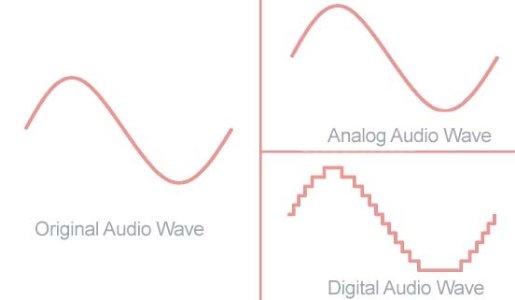The Award for Best Comeback Goes to Vinyl
This weekend the music world will honor those who made strides in their community throughout the year. With superstars from various genres in attendance one thing is certain, the biggest comeback of 2014 goes to vinyl records. In a technology age where new formats are outdated before they even catch on, Vinyl which debuted in 1945, might have seemed end of life with introduction of 8-track and compact cassettes. It wasn’t long ago that records appeared on pop culture “Kids these day will never know…” lists with typewriters and rotary phones. Yet in a surprising twist, with music sales dropping and paid downloads declining, music lovers are buying vinyl in mass numbers.
According to Nielson Sound Scan Data, 9.2 million records were sold in 2014 alone, a 52% increase in vinyl sales since 2012. This is even more impressive when you take into consideration that music sales are on a steady decline, dropping 6% this year alone. Wall Street Journal, contributing editor, Ethan Smith, reports the general public is changing their listening habits. Streaming services have grown in popularity (up 54%) a figure negatively correlated with the dip in music sales. With 9% fewer paid album downloads and purchased song downloads dropping 12%, it is easy to attribute these figures to the streaming trend. But if that is the case and everybody is streaming their music instead of buying it, then why are vinyl sales through the roof?
In an attempt to answer this question HTE (home technology experts) looks at the science, psychology, and investment value of choosing vinyl.
The Science: Analog vs Digital
Ask an audiophile what’s the difference between LPs and iTunes lossless files you have been downloading since 2001 and they’ll surely scoff. For those of you new to the revival of vinyl, it has to do with vinyl being an analog medium. The term “analog” might seem outdated, bringing back images of brick sized cell phones and heavy square televisions, but when it comes to audio, analog has its advantages.
An analog recording reproduces a continuous wave, the way sound occurs naturally. When you hear the word digital, think binary, where 0 is “off” and 1 is “on”. Digital recordings sample audio, using values to record data (music). Because of this, some people argue that digital recordings can miss subtle nuances, specifically with regards to lower frequencies (deeper sound).
When comparing the two technologies it is important to consider how the music was originally recorded and the medium’s quality. After the 1970’s, a significant amount of music was recorded using digital technology, negating any benefit of an analog medium. However, in 2011, Variety magazine reported that vinyl’s popularity encouraged new and seasoned artists alike, to create analog recordings of their work.
It is also important to look at the quality of the digital file. Early digital downloads focused on reliability and smaller file size, sacrificing the music’s fidelity (quality), but with significant improvements in codecs (the coding and de-coding of digital data) that’s no longer the case. Similarly, a record in poor condition (dirty or scratched) will produce subpar sound.
So when comparing a high fidelity digital recording, such as MQA, with a mint condition vinyl, which sounds better? According to a study by NHK Laborites, the majority of untrained listeners could not tell the difference. Most experts, agree that the quality of audio equipment (as opposed to the medium) is the most important factor when playing Hi-Fi music. As with all entertainment, enjoying music isn't a science, it is an experience; one that differs greatly between the two technologies.
Psychology of Vinyl
The psychology of vinyl is about creating a listening experience, as reported by David C. Giles in peer-reviewed article, The psychology meaning of personal record collections and the impact of changing technological forms.
There is no question that carrying hundreds or even thousands of songs on your phone is convenient. Let’s be honest, nobody is going to bring a turn table with them to the fitness center to pump them up while they run. For this reason, digital downloads and streaming service play a vital role, but it is a very different experience. Digital music focuses on convince and saving physical space, while records are about physically connecting to a tangible object associated with music. Taking the LP out, and playing it on the turn table mentally prepares you for the listening experience.
Additionally, vinyl have the visual appeal files do not. Stating, listeners “very much associate certain LPs with the sleeves– the accompanying imagery is all part of the music, not just the front cover but the inside sleeve, the pictures surrounding the lyrics, and other images”.
While music has been known to be very personal, it is also extremely social. Listening to your favorite artist with others, reinforces your appreciation of the music, “there is nothing that galvanizes people’s commitment…like seeing and meeting like-minded others”. Gathering around the turntable, or meeting in a record stores is a social activity. A download is not.
Finally, LPs are a visual representation of taste and preference. Like books on a shelf, vinyl records provide insight into who you are and where you’ve been (mentally and emotionally) at different points of your life. As Giles put it, “If we choose to show off our musical collection then it becomes part of us, or at least it’s a visible part of us that we are revealing to the people who we welcome into our home.”
Investment Value
Nobody is suggesting you dessert your hedge fund and stock up on records, but vinyls do have both a monetary and emotional investment value. Much like art, sports memorabilia, or even comic books, the sacredness of an item is highly impacted by its rarity.
Like chasing a white whale, obtaining or searching for an obscure record is significantly more emotional than simply buying a song with a click. Not only does obtaining such a gem feel more valuable, financially speaking it has an exponentially higher worth. For example, according to NME, the holy grail of records, the 1958 original recording of the The Quarrymen (McCartney, Lennon, Harrison, with Colin Hanton, and John Duff Lowe), “That’ll Be The Day/In Spite Of All The Danger” is estimated at over $113,000.
What to Do?
Enjoy your music! If you are interested in collecting then obviously go for the vinyl, but make sure you store them vertically, in a climate controlled environment. Remember, you don’t have to choose between the two. You can have a digital play list you rock out to in the car and a physical collection you enjoy at home.









